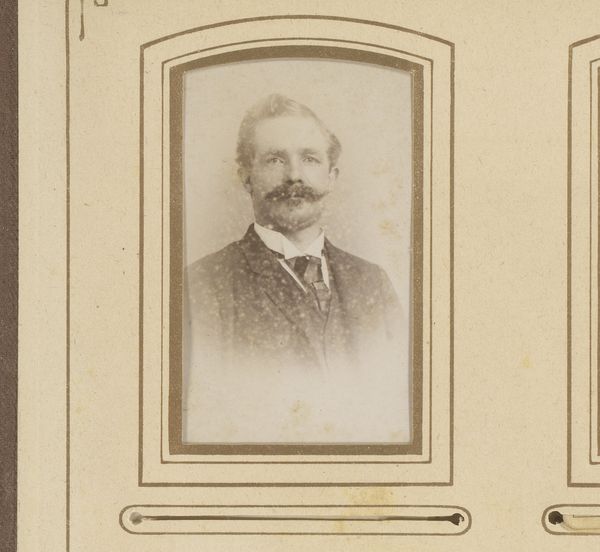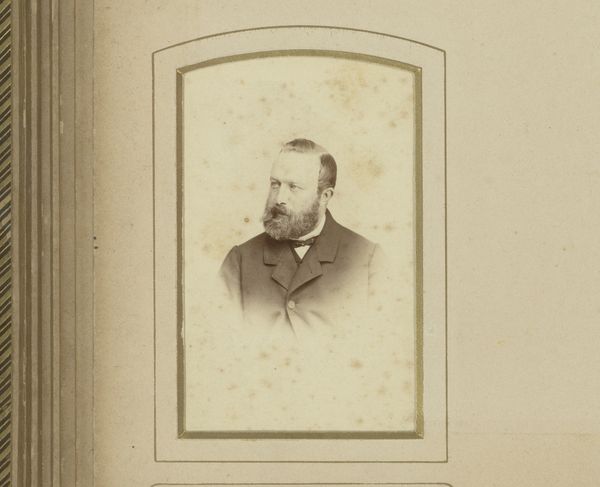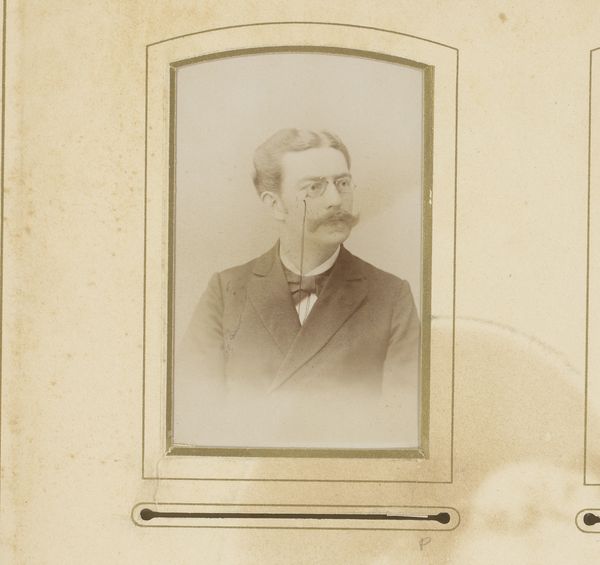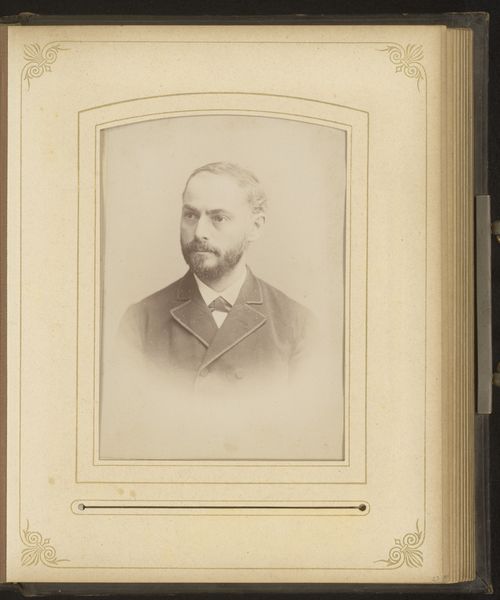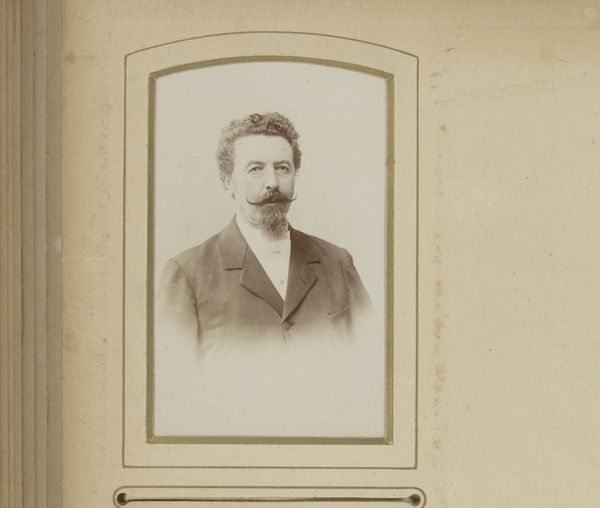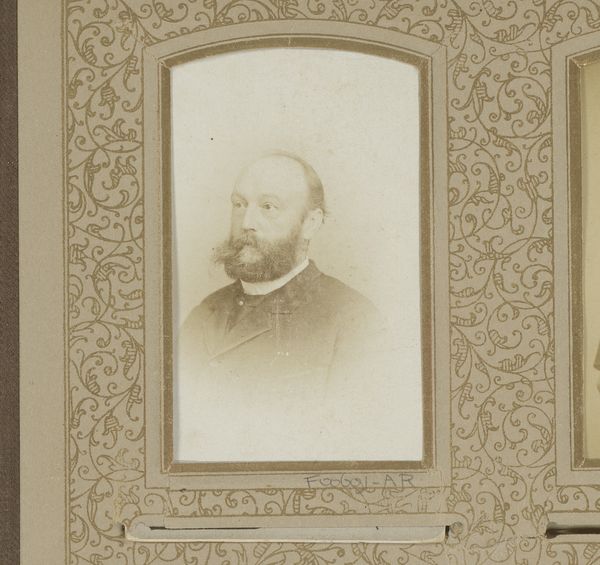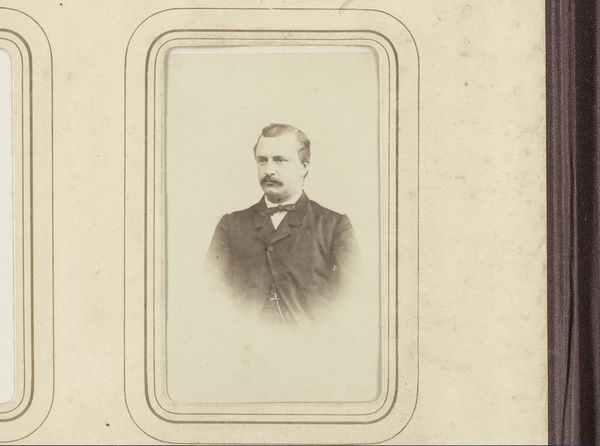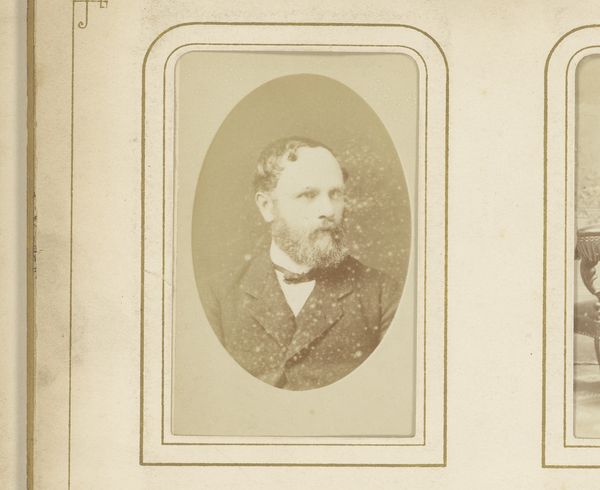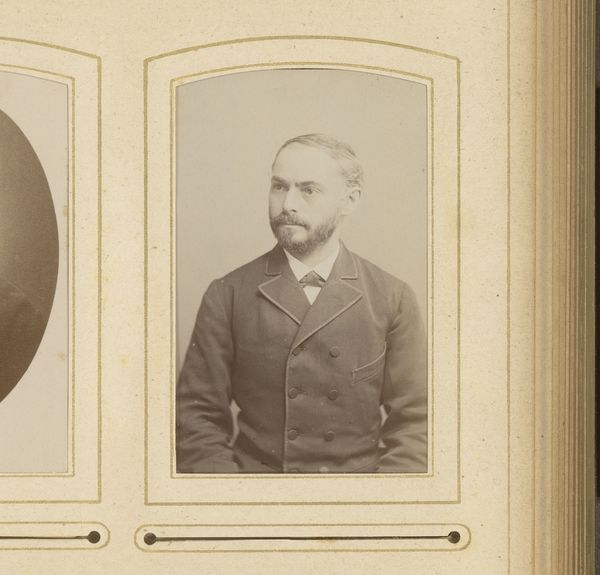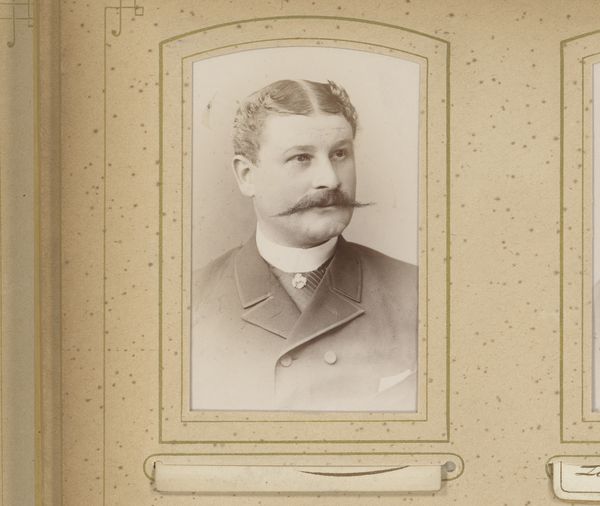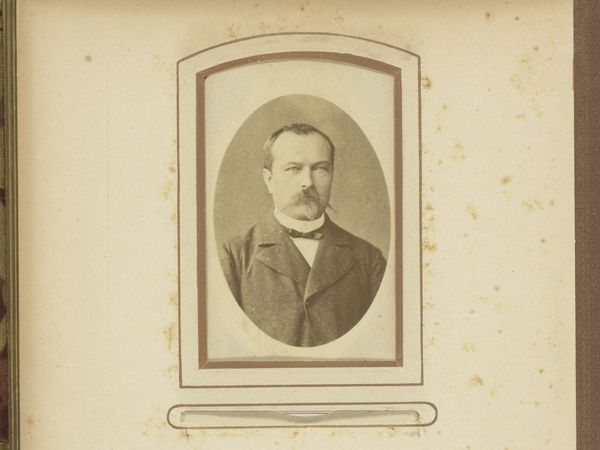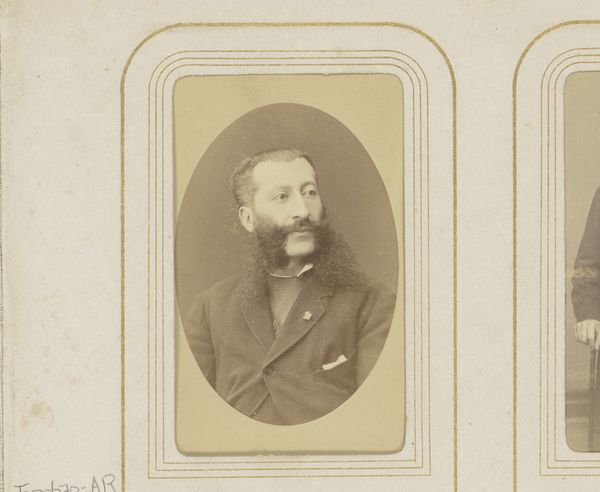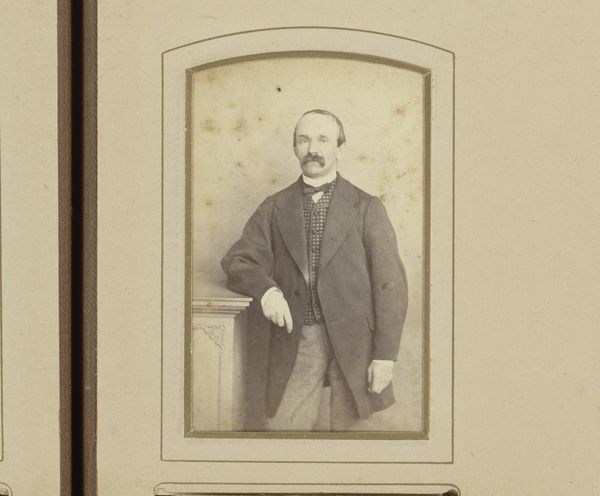
photography
#
portrait
#
photography
#
genre-painting
#
realism
Dimensions: height 85 mm, width 52 mm
Copyright: Rijks Museum: Open Domain
Curator: Let's discuss this compelling portrait of an unknown man, crafted sometime between 1885 and 1906 by F. Meeus-Verbeke, using photography. Editor: There's a certain quiet dignity that immediately strikes me. The oval format, the subdued sepia tones, the hint of hand-coloring in the surround - it all contributes to a sense of formality and introspection. Curator: It’s fascinating to consider the materials at play. The photographic print itself, the card stock mount, perhaps even touches of paint added by hand. These elements were deliberately chosen, reflecting the sitter's social status and the photographer's desire to elevate the image beyond a mere snapshot. It bridges the gap between industrial reproduction and handcrafted object. Editor: Indeed. The man’s clothing speaks volumes – the tailored jacket, the neatly trimmed beard and mustache. It presents a bourgeois sensibility, aiming for a representation of respectability and possibly professional achievement. This was likely displayed prominently in his home, communicating his identity to the world. Curator: We can speculate about the labor involved. Meeus-Verbeke probably ran a studio, perhaps with assistants preparing the photographic materials, developing the prints, even retouching negatives. It represents a small business in the late 19th, early 20th century dependent on a growing market of those who could afford to participate in this kind of visual representation. Editor: It's more than a visual representation; it's an active social transaction. Commissioning a portrait was a deliberate act of self-fashioning, playing into social conventions. The photograph, reproduced and distributed, cemented the individual within a community and established a legacy, however humble. What kind of power dynamics do you think were at play here? Curator: Well, considering photography was expensive and reserved for a segment of society, this visual vocabulary created exclusivity as it propagated visual culture, especially considering what kinds of occupations were deemed to deserve that sort of elevation. It’s telling that while painted portraits were increasingly about celebrating personal accomplishments, photographic portraits became records for more widespread middle classes. Editor: Absolutely, which made it also susceptible to socio-political ideologies. Understanding this image means recognizing not just the individual portrayed, but the complex web of social expectations, economic realities, and technological advancements that brought it into being. It reflects society's self-image at the time. Curator: A small, but rich piece of material culture offering a large insight, indeed!
Comments
No comments
Be the first to comment and join the conversation on the ultimate creative platform.
